The Chicago Metropolitan Area’s Green Economy: Exploring Changes by Industry
Exploring Clean Energy Economy Changes by Industry: An Interactive Bubble Chart Heading link

The Voorhees Centers’ recent report, Chicago’ Region’s Clean Energy Economy, Studying Changes in Employment Since 2011, studies clean energy jobs that are involved in (1) the production, transmission and distribution of clean energy; (2) the expansion of energy efficiency through the manufacturing of energy-saving products, the construction of energy-efficient buildings, and the provision of services that reduce end-use energy consumption; and (3) environmental management and the conservation and regulation of natural resources.
To accompany this report, we created an interactive bubble chart that allows users to further explore the Chicago Metropolitan Area’s (MSA’s) Green Economy industries.
On a high level, the chart can be used to see all 82 industries that make up the Chicago MSA’s Green Economy. The chart breaks down the Green Economy into its three subcategories and allows the user to explore each subcategory and individual industry. The chart includes information on:
- Number of jobs (size of bubble)
- Percent change in number of jobs (x-axis)
- Location quotient (y-axis).
The rest of this post goes into depth on an industry in each quadrant and also highlights some interesting outliers.
A Strong and Advancing Industry: Architectural Services Heading link
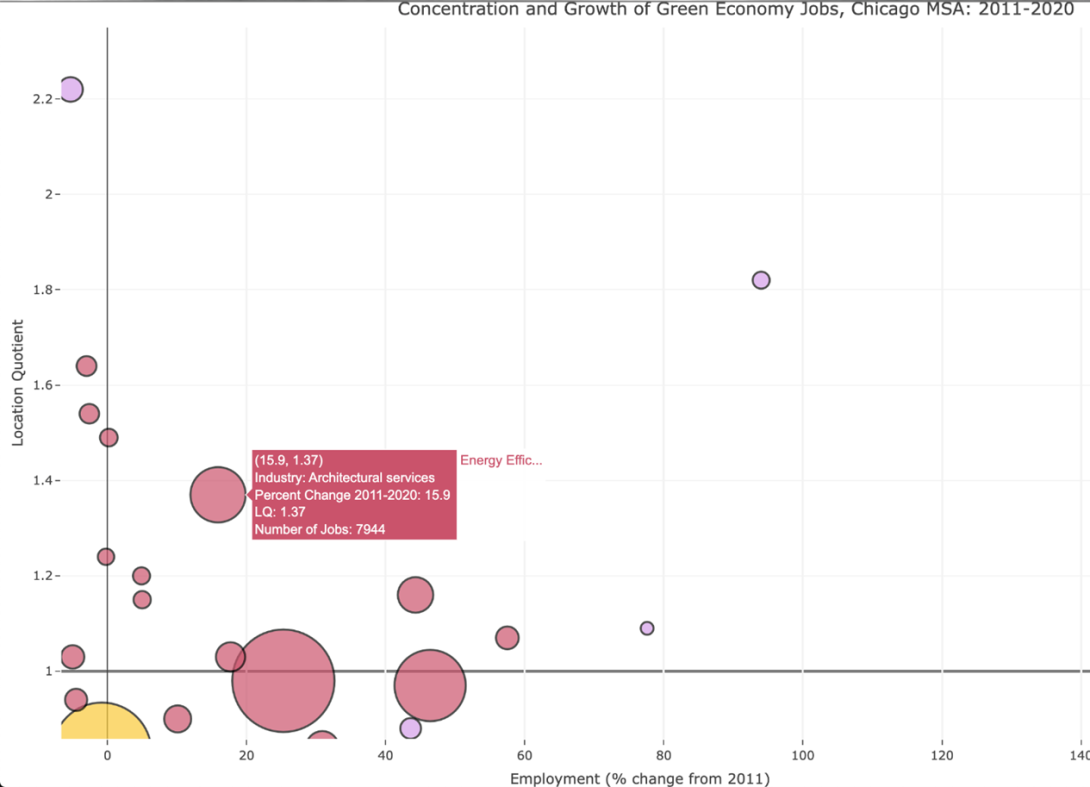
The Architectural Services industry is one of the strongest and most robust industries within the Chicago MSA. This industry is comprised of establishments that plan and design buildings and has nearly 8,000 jobs in the Chicago MSA. It has grown by 16% since 2011 and is considered a strong industry in comparison to the United States with a location quotient of 1.37.
A Weak and Advancing Industry: Electric Power Distribution Heading link
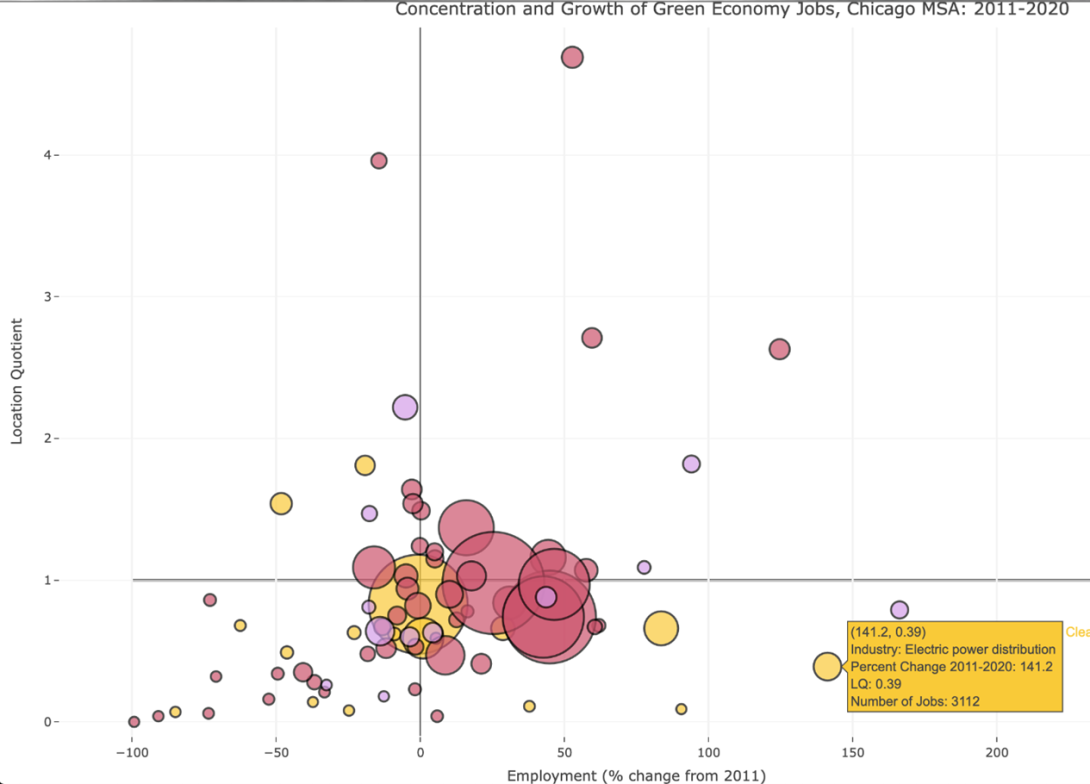
The Electric Power Distribution industry has grown at a very high rate since 2011 (141%), reflected in an additional 1,822 job since 2011. This industry is comprised of establishments that either work to distribute electricity or are brokers that sell electricity. Despite showing so much growth, it is still considered a weak industry with a location quotient of only .39.
A Weak and Declining Industry: Industrial Building Construction Heading link
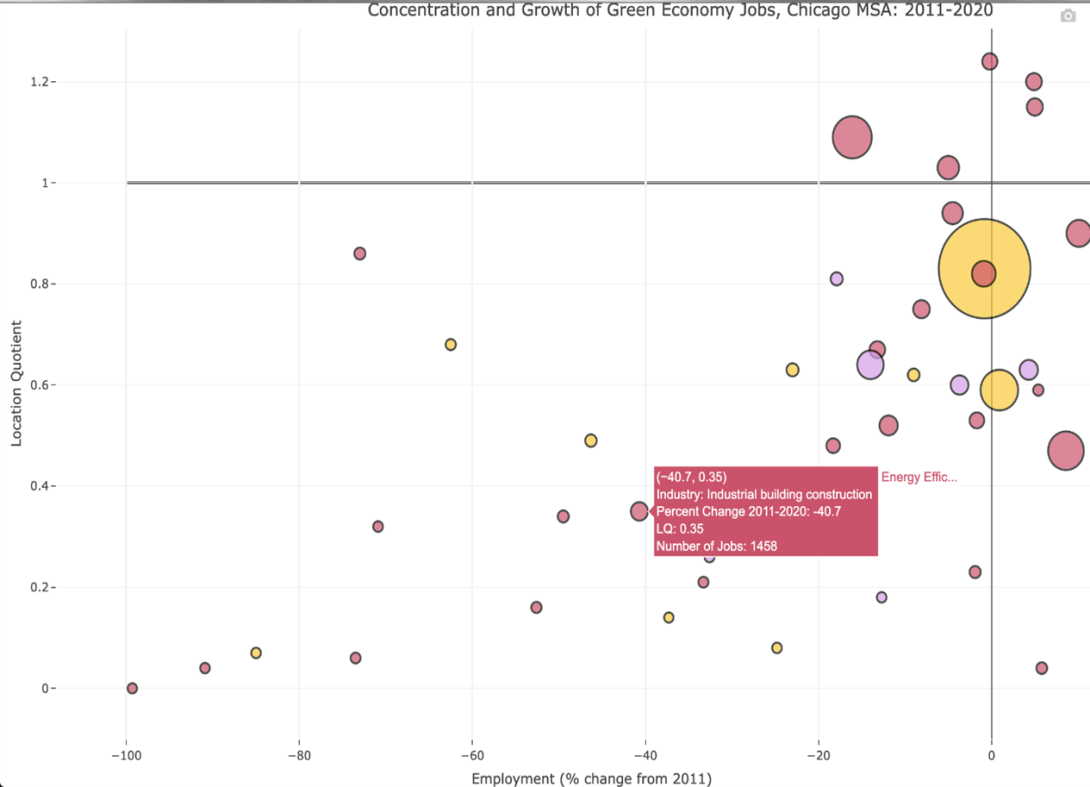
The Industrial Building Construction industry is weak and shrinking in the Chicago MSA. Since 2011, it has lost just over 1,000 jobs a percent change of -41%. Despite having 1,458 jobs, it is still a very weak industry with a location quotient of .35.
A Strong and Declining Industry: Nuclear Electric Power Heading link
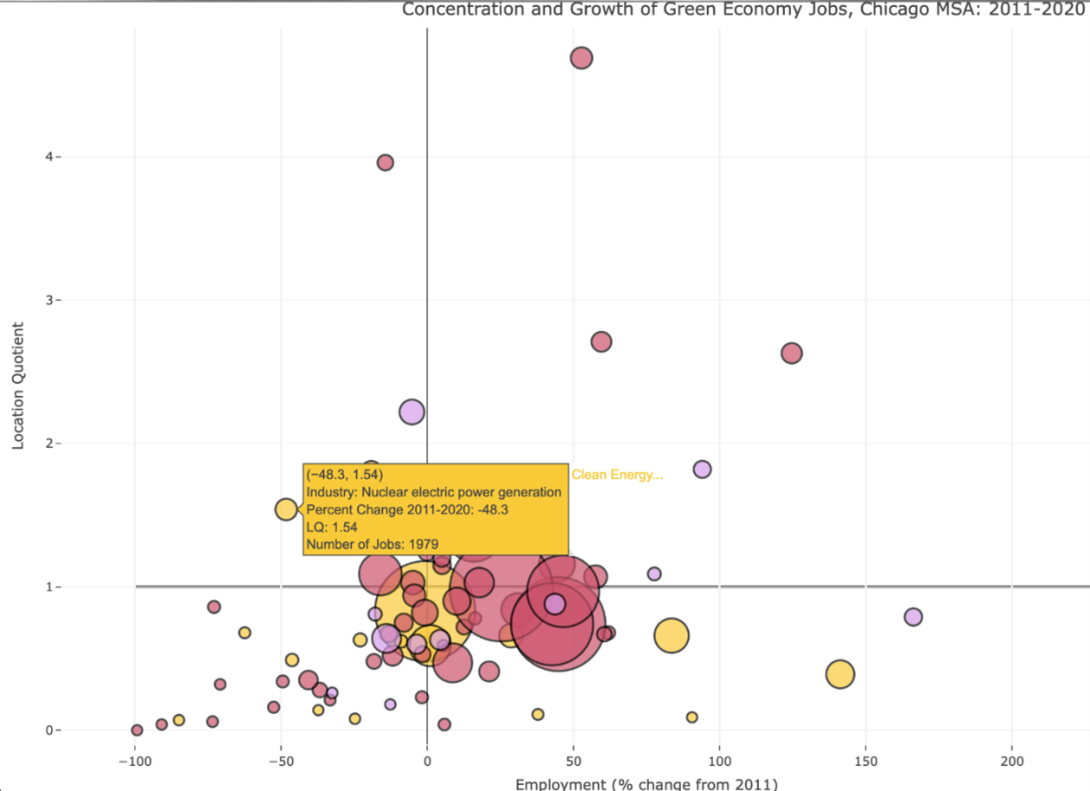
While it remains a regional strength, the Nuclear Electric Power Generation industry has seen a significant drop in its number of jobs since 2011. The industry has lost almost 2,000 jobs since 2011, reflected in its -48% change. Despite such a large loss in jobs, it remains a strong industry with a 1.54 location quotient.
An Outlier: Solar Electric Power Generation Heading link
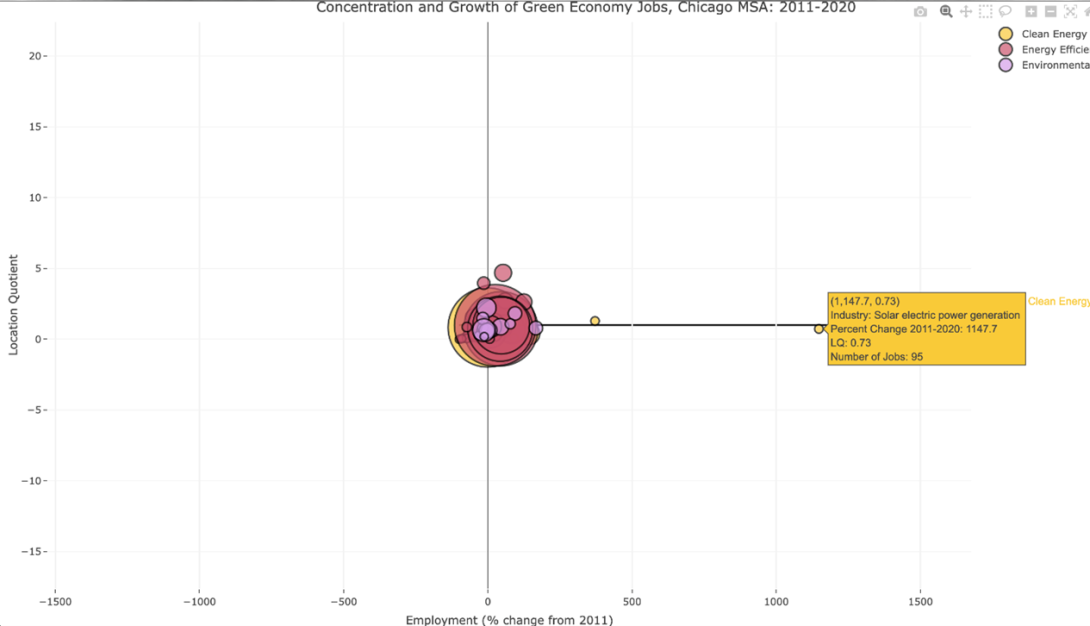
The biggest outlier in the Chicago MSA is the Solar Electric Power Generation industry. This industry has seen remarkable growth since 2011 with a 1,148% change. However, there are still only 95 jobs in the region (up from 7 in 2011). While it is considered a weak industry with a .73 location quotient, if it continues to grow at such a fast pace, it will soon become a regional strength. It must be noted that this industry is only comprised of jobs engaged in the operation of solar generation facilities, not the installation of solar energy devices.
An Outlier: Environmental and Conservation Organization Heading link
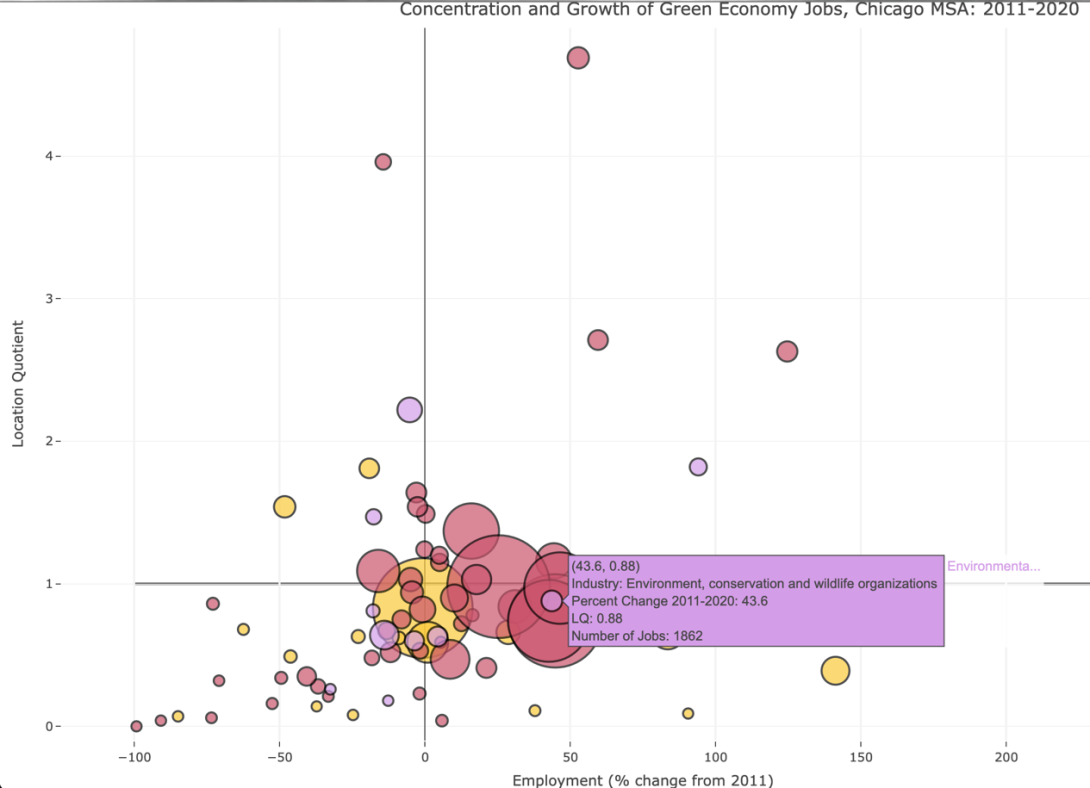
With the looming environmental crisis, there is expected growth in environmental and conservation organizations. While this industry still remains weak compared to the United States, it has gained 565 (43.6%) jobs since 2011, a greater percentage change than the United States (32%).